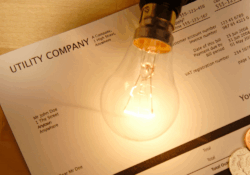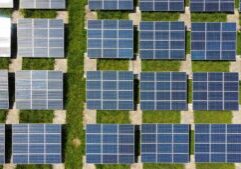The global impact of the Covid-19 pandemic is one that will be felt for decades to come. Many world economies have been left reeling, while the way we as a society socialize and do business has experienced a staggering shift. World energy production has likewise been affected; urgent demands elsewhere have pulled public attention away from clean energy technologies. This could create significant energy and conservation problems going forward.
However, as we work together to move past the struggles of 2020, we have every reason to be optimistic for the future. Here, we take a look at several primary energy trends set to take hold in 2021 – and beyond.
Solar Trends
A major energy technology taking hold around the world is solar power. And while the number of residential solar installations in the U.S. dropped by about 20% between the first and second quarters of 2020, as quarantine orders relaxed, solar power saw a rebound. Rooftop solar installations increased 9% in Q3 2020, and 9.5 gigawatts (GW) of new utility solar-panel purchase agreements were announced. It’s currently estimated that the U.S. added 19 GW of solar power by the end of 2020, setting new records for solar use. By Q4, solar power accounted for 43% of all new electricity-generating capacity in the U.S.1
2021 will likely continue this shift towards solar power. And as global electricity demand sees a surge of about 60%, many previously untapped areas will begin to embrace solar solutions to meet growing needs. However, recent problems at factories producing polysilicon (a crucial component in the construction of solar cells) may lead to rising prices. These increased costs may be offset by strong federal policies, such as the Solar Investment Tax Credit.2 With renewed capabilities, mounting global interest, and constantly improving technology, solar is poised to become the world’s most productive renewable energy source in the coming decade.
Wind Power Trends
COVID-19 disrupted a high number of clean energy projects, including new wind-power installations around the world. However, despite setbacks, wind energy continued to grow throughout 2020. New wind turbine energy-generating capacity accounted for over 23 GW in the United States alone, setting new records and completely eclipsing 2012’s previous record of 13.2 GW.3
2021 will see not only more of a focus on wind-turbine power, but also a new interest in improving turbine power-generating capacity. GE has plans to fully deploy the Haliade-X wind turbine at Rotterdam Harbor in the Netherlands. With a power output of 12-13 megawatts (MW),4 it produces 45% more electricity than any of the other offshore turbines currently in use.5 And it’s not just major players that are driving upward trends in wind power; the small wind power market is growing as well. Valued at 9,423.13 million USD in 2018, it’s now projected to reach 23,485.13 million USD by 2025.6
Clean Energy Enthusiasm
The Covid pandemic wasn’t the only stumbling block for clean energy initiatives in the last few years. The previous U.S. administration was divided on clean energy initiatives, taking steps to forestall renewable energy advancements, and making effort to cut funding for Department of Energy programs supporting research and development of clean energy technologies. But with a new president in office, enthusiasm for clean energy is on the rise.
President Biden has made clean energy a major focus of his presidency, laying the groundwork to allow the U.S. to achieve a 100% clean energy economy and reach net-zero emissions no later than 2050.7 As this push gains steam, along with the laws, measures, and orders that support it, expect public opinion to grow in support of clean energy initiatives.
Renewable Energy Rebound
Global disruption of economies and supply lines forced many renewable energy projects into indefinite hiatus. However, many of these projects were already fully funded before the shutdown, making it a relatively simple matter to resume construction and move forward. As these projects come online, expect a rebound in renewable energy capabilities.
But while 2021 will see a return to 2019 renewable energy capacity, it will still fall short of IEA energy forecasts. Energy consumption in the U.S. will likewise rebound; after falling 3.8% in 2020, the IEA predicts that it will grow by 1.6% in 2021, and then grow an additional 1.7% in 2022.8 As energy demands increase, renewable energy projects will need to keep up.
Reduced Rates
Reduced energy demand during 2020 led to reduced energy rates. And, as energy demand normalizes, rates will also start to climb. That said, the increase will not be as dramatic as it has traditionally been in years past. Residential electricity is expected to increase by only 2.8% between 2020 and 2021.9 Retail electricity prices will see a similar increase.
However, as more and more areas and energy suppliers adopt feasible renewable energy options, these rates will likely slow, or even reverse, their climb.
Conclusion
2020 saw major changes in energy production and demand, and it’s unlikely that 2021 will bring us back to the place where we were before the pandemic. But that may be a good thing. With renewed interest and determination, backed by government support, the U.S. is poised in the next year to make significant strides towards clean energy and renewable resources. And that’s a trend we can all get excited about.
Conservice can help evaluate your energy usage based on actual data, so that you can invest in sustainable options that work for you. Click here to learn more.
Subscribe To Our Blog Newsletter
Keep yourself ahead of the curve with the latest utility news, trends, & resources.
Editor's Picks
What the 2026 GRESB Updates Mean: Our Observations on the Key Shifts
Change is on the horizon. The 2026 GRESB Real Estate Standard marks a decisive move toward measurable, performance-based climate action. Rather than incremental adjustments, these updates focus attention on the issues that most directly shape long-term value and resilience. GRESB…
Read MoreCalifornia AB1414: New Bulk Internet Opt-Out Law—What You Need to Know
New Requirements Go Into Effect January 1, 2026 California has officially passed AB1414, a bill that changes how property owners and operators can offer bulk internet services to residents. Beginning January 1, 2026, property owners must allow residents the ability…
Read MoreBuilt to Go the Distance: How Properties Achieve ENERGY STAR, LEED, and WELL Certifications
We recently held our first 5K for our team, and it got us thinking. We watched many of our Experts who hadn’t run in years (or ever) lace up, train for weeks, and push through on the big day. The…
Read MoreSmart Waste & Water Analytics: The Next Cost-Cutting Frontier in Multifamily
In this economy, cost control is on everyone’s mind. And energy and payroll usually top the list for multifamily operators. But here’s the thing: water and waste are two of the fastest-growing, least-managed costs eating into margins every day. Consider…
Read MoreYour Utilities Might Be Lying to You.
Preventing Losses from Errors, Theft, and Oversight. Utilities don’t always tell the whole truth. At least not without a little verification. Between billing errors, meter issues, and missed rate updates, it’s easy for even the most diligent property teams to…
Read MoreThe First Bills Are In. Here’s What Early Utility Data Reveals About Student Housing
Move-in day has come and gone. The carpets are clean, the furniture is set, and the flood of parents and students with boxes and carts has finally slowed. For operators, the chaos of Turn is behind them. But another wave…
Read MoreMeet the New Goby Dashboard That Turns Sustainability Data Into Action
Conservice is excited to introduce a new dashboard for Goby, our sustainability and compliance platform. Goby has always helped real estate owners and operators manage utility and sustainability data across their portfolios. With this release, the platform now delivers insights faster,…
Read MoreUtility Data Centralization: Unlocking AI, Energy, and Sustainable Solutions
Let me tell you a secret. If you were to take over my computer at any given moment, you’d probably find 30 tabs, 10 apps, and a spreadsheet all open at once. I’ll admit it: I’m no expert at centralizing…
Read MoreThe Hidden Engine Driving Build-to-Rent in 2025
When the Smiths moved into a brand‑new rental home last spring, they didn’t just discover fresh flooring or smart thermostats; they stepped into a lifestyle shaped by seamless utility management. They never saw a bill go astray, never gawked at…
Read MoreENERGY STAR Portfolio Manager: What’s Really Happening and How to Protect Your Data
If you work in property management or sustainability, you’ve probably heard the headlines. Back in May, several news outlets reported that the federal ENERGY STAR program (including ENERGY STAR Portfolio Manager) could be eliminated. The reality in August 2025 looks…
Read MoreExperience Effortless Utility Management and Cost Savings
Connect with us today to discover how our solutions can ease tenant billback, streamline utility management, and reduce your costs and energy usage. Make your utility management smarter and more efficient with Conservice!













